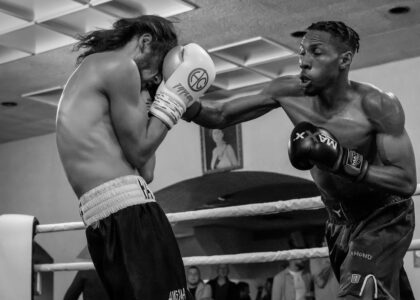Boxing is one of the most physically demanding sports, requiring a blend of speed, strategy, power, and technique. Whether you’re a novice stepping into the ring for the first time or a seasoned boxer honing your skills, understanding the fundamentals of the sport is crucial. Among the many techniques and punches a boxer must master, the jab stands out as a fundamental tool in both offense and defense.
What is the Jab?
In its simplest form, the jab is a quick, straight punch thrown with the lead hand, typically the left hand for orthodox fighters. While it might seem like a simple punch compared to the more powerful cross or hook, the jab plays a pivotal role in the success of a boxer. It can be used to set up other punches, control distance, break through defenses, and even score points.
For many fighters, the jab is their first line of offense and defense. It’s versatile and essential for keeping opponents at bay, breaking their rhythm, and dictating the pace of the fight. Whether you’re working on a quick combination or simply looking to create space, the jab is your primary tool.
The Importance of the Jab in Boxing
-
Range Control: The jab is a great way to control the distance between you and your opponent. By utilizing your jab effectively, you can establish a comfortable range, allowing you to move in and out of striking distance while avoiding incoming punches.
-
Set Up Power Shots: A solid jab can set the stage for more powerful punches. By getting your opponent to react to your jab, you can create openings for hooks, crosses, or uppercuts.
-
Defensive Tool: It’s not just an offensive weapon. A jab can be used to disrupt an opponent’s attack, forcing them to reset or making them hesitate. By maintaining a consistent jab, you keep your opponent at a distance, preventing them from getting in close enough to land their own strikes.
-
Tiring Your Opponent: When you consistently jab, you force your opponent to constantly react. This can wear them down over time, as they need to deal with the movement, speed, and pressure of the jab.
-
Scoring Points: In the world of boxing, a clean jab to the opponent’s head or torso can earn you points, even if it’s not the most powerful punch. In fact, boxers often rely on their jab as a way to score points without getting into close-quarters exchanges.
How to Throw the Perfect Jab
While the jab may seem like a simple punch, its execution requires precision and proper technique. Here’s a breakdown of how to throw an effective jab:
-
Positioning and Stance: Before throwing any punch, make sure you’re in the right stance. For orthodox fighters, the left foot should be forward, and the weight should be balanced evenly. Your lead hand (left hand for orthodox, right hand for southpaws) should be up in front of your face, ready to throw the jab.
-
The Motion: The jab is a quick, straight punch. To throw it correctly, push your lead hand forward in a straight line while rotating your shoulder slightly. Your arm should extend fully, with your fist landing palm-down. Don’t extend your elbow fully like a “swinging” punch; rather, keep your arm straight and controlled. At the same time, rotate your lead foot slightly to generate additional power from the ground up.
-
Breathing: It’s essential to exhale as you throw the jab. This will help with speed and ensure that you don’t tense up and lose energy. Breathe out through your mouth as your fist makes contact.
-
Return Quickly: A common mistake when throwing a jab is to leave the hand extended for too long. Always return your jab hand to your guard position quickly after impact. This ensures you’re ready to defend or throw another punch at a moment’s notice.
-
Footwork: Footwork is just as important as the punch itself. As you throw the jab, you can step slightly forward with your lead foot to close the distance or use a quick step back to create more range. Moving in and out while jabbing will help you maintain control and keep your opponent guessing.
-
Accuracy Over Power: One of the most important things to remember with the jab is that it’s more about accuracy and timing than raw power. A quick, accurate jab that lands cleanly can be more effective than a wild or heavy jab that misses or is poorly timed.
Common Jab Variations
As you become more comfortable with the basic jab, you can experiment with different types of jabs that offer unique advantages:
-
Double Jab: A double jab is simply throwing two jabs in quick succession. This variation can disrupt your opponent’s timing and force them to react defensively. It’s an effective way to create openings and set up other punches.
-
Jab to the Body: Instead of always aiming for the head, you can target your opponent’s torso. A jab to the body can lower their guard and leave them vulnerable to other punches. It’s also a good way to control the rhythm of the fight by keeping your opponent from anticipating your moves.
-
Feinting the Jab: Feinting is a technique where you pretend to throw a punch to get your opponent to react. Feinting a jab forces them to react defensively, giving you an opening to follow up with a real jab or another punch.
-
Jab-Cross Combination: One of the most classic combinations in boxing is the jab-cross. By following up your jab with a cross (a straight punch thrown with the rear hand), you can create power and speed that overwhelms your opponent’s defense.
Troubleshooting Common Jab Mistakes
-
Telegraphing the Jab: If you wind up your jab or throw it too slowly, your opponent will have time to anticipate and react. Keep your movements short and quick to disguise your intentions.
-
Dropping the Guard: After throwing the jab, some boxers make the mistake of dropping their guard and leaving themselves open. Always return your jab hand to your face and maintain a strong defensive posture.
-
Overextending: Extending the jab too far can leave you off balance and open to counterattacks. Focus on precision and not overextending, even when you’re aiming to hit your opponent with power.
-
Inconsistent Timing: A jab that is thrown too frequently or without purpose can become predictable. Use the jab strategically, varying its speed, timing, and target area to keep your opponent guessing.
Conclusion
Mastering the jab is one of the first steps toward becoming a complete boxer. It’s a vital tool for controlling the pace of a fight, setting up powerful combinations, and defending against incoming attacks. By focusing on your form, precision, and timing, you can turn your jab into a weapon that will give you the upper hand in any match. Keep practicing, and remember—great boxers know how to jab, and even better boxers know when and how to use it effectively.







